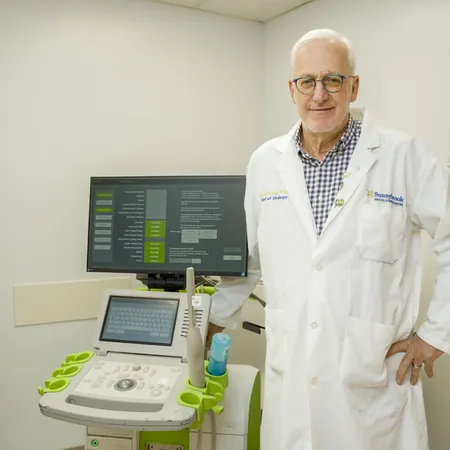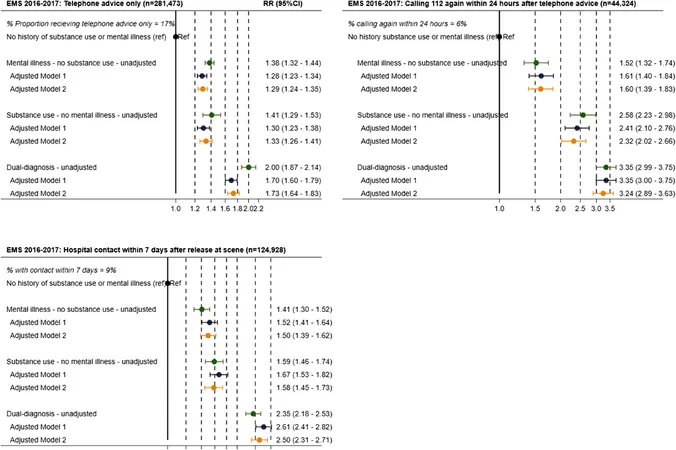
Revolutionary High-Resolution Ultrasound Set to Transform Prostate Cancer Diagnosis
2025-03-27
Author: Benjamin
In a groundbreaking new study from Sunnybrook Health Sciences Centre and the University of Toronto, researchers have discovered that high-resolution ultrasound technology, specifically micro-ultrasound (microUS), is on par with MRI in accurately detecting prostate cancer. This development holds the promise of quicker diagnoses and fewer hospital visits, which could significantly ease the burden on MRI facilities.
Laurence Klotz, the principal investigator of the trial and a leading expert in prostate cancer research, emphasizes the revolutionary potential of this new approach. “This is practice-changing for the diagnosis of prostate cancer. We can offer patients a one-stop shop, where they are imaged and then biopsied immediately, if required,” he states.
One of the most compelling advantages of microUS is its accessibility. It incurs lower costs compared to MRI, is free from toxic side effects, and has no significant restrictions for potential patients. This new method could free up MRI machines for other medical needs, such as hip and knee examinations, thereby optimizing overall healthcare resources.
The recently published study in JAMA reveals findings from the first randomized trial, the OPTIMUM trial, which compared the effectiveness of microUS with MRI-guided biopsy in detecting prostate cancer. The extensive international study involved 678 male participants who underwent biopsies at 19 hospitals across Canada, the U.S., and Europe.
Participants were divided into three groups for the study: half received MRI-guided biopsies, one third were treated using microUS followed by MRI, and the remainder underwent microUS alone. The results were promising—microUS demonstrated the ability to detect prostate cancer as effectively as MRI, with almost identical detection rates across all groups. Even in participants who had both types of biopsies, the microUS technology proved adept at identifying significant cancers.
Prostate cancer stands as one of the leading cancers diagnosed in men, with approximately a million biopsies conducted annually in Europe and a similar number in the U.S., while Canada sees around 100,000 such procedures each year. Traditionally, biopsies often rely on MRI images that are overlaid onto standard ultrasound, a process that requires multiple medical visits and specialized interpretation skills.
MicroUS, developed in the 1990s by Stuart Foster, a senior scientist at Sunnybrook, utilizes higher frequency sound waves than traditional ultrasound, enabling it to produce images of three times greater resolution. This level of detail rivals that of MRI scans, making targeted biopsies much more precise and feasible during a single appointment, even in outpatient clinics.
The ease of training clinicians, particularly those experienced in conventional ultrasound, to utilize microUS further enhances its potential benefits. With fewer barriers to access, patients could receive prompt testing and treatment, significantly impacting their outcomes.
Klotz believes the implications of the OPTIMUM trial’s findings could mirror the revolutionary effects witnessed after the introduction of MRI technology. "When MRI first emerged and allowed for accurate imaging of prostate cancer through targeted biopsies, that was a game changer. However, MRI has its limitations, including high costs and access challenges," he reflects.
Nevertheless, microUS offers a beacon of hope as a Canadian innovation in healthcare. With its inception rooted in Canadian research, this technology not only promises to update prostate cancer diagnosis but could also reshape patient care paradigms significantly. The future of prostate cancer screening may be brighter, faster, and more efficient—thanks to high-resolution ultrasound.









 Brasil (PT)
Brasil (PT)
 Canada (EN)
Canada (EN)
 Chile (ES)
Chile (ES)
 Česko (CS)
Česko (CS)
 대한민국 (KO)
대한민국 (KO)
 España (ES)
España (ES)
 France (FR)
France (FR)
 Hong Kong (EN)
Hong Kong (EN)
 Italia (IT)
Italia (IT)
 日本 (JA)
日本 (JA)
 Magyarország (HU)
Magyarország (HU)
 Norge (NO)
Norge (NO)
 Polska (PL)
Polska (PL)
 Schweiz (DE)
Schweiz (DE)
 Singapore (EN)
Singapore (EN)
 Sverige (SV)
Sverige (SV)
 Suomi (FI)
Suomi (FI)
 Türkiye (TR)
Türkiye (TR)
 الإمارات العربية المتحدة (AR)
الإمارات العربية المتحدة (AR)